I hope you enjoy this multi-media format (I call it blog-casting). I want you to hear me tell you my thoughts directly but I also want you to have access to the slideware - and I wanted to memorialize it on my blog, as opposed to LinkedIn. Consider this me putting my stake in ground with regard to innovation, and exactly how it’s supposed to work going forward.
And it should work the same for the firms who are pushing these concepts on you and your business.
I’ll let you all figure out what you prefer: the same old time-consuming and expensive consulting theater that is performed by people who need attention, or a new faster, cheaper way that has far fewer visible features. I know what I’d prefer.
It may not happen next week, but it will accelerate and at that point it will be too late for the incumbents. Oh, those poor incumbents. 🥲
THE VIDEO IS NOT A RECITATION OF THE COMMENTS BELOW
Yes or No?
Unbelievably, one of the big boy consulting firms allowed one of their own to publish an article that predicted the disruption of the consulting industry 10 years ago. I remember reading this article. Since then I’ve worked in several consulting firms, and each one of them is under continual price pressure. Those that respond to RFPs have only one real way to differentiate….and it always comes down to price.
Your ability to make a prettier, more heavily loaded, or confounding PowerPoint deck just won’t do it any more. The one thing I can say about consulting is that these teams are continually in the middle of these responses and the pressure is extreme. The personalities can’t see that it’s their system, or lack thereof, that is failing them. They think value it’s all about them … personally.
Clay Christensen did a lot of work to bring innovation into a new light. His initial take on how disruption works was intriguing. And what he suggested seemed pretty logical on the face of it. But he really didn’t offer the solution he thought he did. He never got much beyond the theory - and was distracted by somewhat ridiculous methods. However, he did mention someone who did have a solution that was laser-focused on the dilemma. h/t Outcome-driven Innovation (ODI)
A slightly different view of what Clay was saying above. Swap out lead users for high-profit-margin customers. What was found using real data, and not theory alone, was that these customers we chase are often over-served and when we focus on them…what Clay said happens. 🤣
These are simple views of the problem. The real question is what does the threat really look like. We’ll get that part in a bit. Stay tuned
So, what is it that customers want? More specifically, what do corporate customers that hire consultants want? First, they are competing for growth, so they’re trying to answer the question “What do I need to do next?” Some might be asking “How can I disrupt the market?”
Me: “Which market?”
Them: “I don’t know.”
Anyway, they need an outcome that they can act on, not a million dollar PowerPoint deck…but outcome-based strategic roadmaps are not what they typically get. And since it’s the same thing everyone else produces (slide decks) they can’t see differentiation in value from one firm to another. Therefore, they stop seeing value at all, and procurement takes over to negotiates the price downward. And they are successful at this.
This should be a huge clue that you (consulting firms) need to change. But how?
Most of the large firms have developed the belief that strategy consulting needs to have a subsequent delivery engagement. That’s not what the strategy consultants think, because they just want to get up on stage and do their nightly performance. But when you look back at who was winning in the market 10-15 years ago, it was the firms who embedded themselves in their clients delivering, and supporting technology…ideally, technology that was well aligned to a front-end strategy (but not always).
But that’s an expensive investment in the catch-up game when all of those highly skilled resources are also under severe price pressure…and probably sitting on the bench.
Them: “We’ll partner with offshore teams to get our average hourly rate down!”
Me: “So, you’re going to compete on price?”
What we really need is a new approach that is scalable, predictable, fast, and cheap. And all of those things together means it needs to have fewer features (consultants and touchpoints), not more. Strategy work needs to be done through a new lens, one that doesn’t require the theater we’ve become accustomed to: the fancy suits, cars, homes.
We have new capabilities if we apply the right problem to them. We can do things faster and less expensively…so many things. It’s both frightening, and exhilarating. Take your pick.
I choose exhilarating!
This is where the fun part begins because most people don’t think like this. But this is exactly what some innovation thought leaders preach. I preach it too, but I’m tired of talking, and ready to walk the walk.
Customers don’t want quarter-inch drills (solution) - they want quarter-inch holes (problem). You’ve heard that before, so let’s apply that the consulting world.
Corporate Executives don’t want consulting engagements. They want to know the top 3 things they must do now to compete for growth next quarter and beyond.
That’s a problem if your project extends into next quarter 👆
And another important thing to consider. It’s not just Fortune 500 sized companies that need to compete for growth, it’s just that they are the only high-profit-margin (lead user) customers that can afford the only solution (consulting) … and it’s not even that great of a solution because the turnover rate of Fortune 500 member companies is many times greater than it was 70 years ago. They are competing worsely. 🤣
I wonder why that is?
Deep, intrusive, time-consuming, and expensive consulting projects might feel good at first, but the generally address one part of the underlying problem. A better solution would inform all parts of your organization equally.
Organization: the components aren’t there to work independently. Therefore, any work you’re doing on the front-end of anything (especially innovation and strategy) should have direct value to anything that takes place subsequently. And you should be able to prove it through measurement.
If everyone is doing the same thing, the same way, it’s easy to copy each other. This is why customers don’t perceive any differentiation in value. And they’re right. There is none.
No Differentiation = No Value
The future demands that we address the real, underlying desired outcomes of customers and devise solutions that address them faster, less expensively, and with fewer visible features. Basically, getting the job done completely differently - and more the job that we traditional don’t see. Do you understand all the technology that delivers music to you on-demand through a variety of apps that run on magical platforms?
No.
So, stop selling your methodology and start selling what companies are actually looking for! After all, this is what innovation consultants tell you to do. Why aren’t they doing it?
Today, we (consultants) value doing things. Instead, we should be asking what customers value. On the surface, they may value a day off from their mundane tasks to attend a workshop that has free, sugar-filled donuts and coffee. But, is this just filling the schedule? Can you name a break-through innovation that came from this? If so, repeat it.
I’ll wait.
Corporate executives are mostly not interested in the activities that add cost and time. They want the end results. This is why they’re leading you! If you can devise a solution that gets them their desired outcomes without all of the hullabaloo, and does so in a fashion that’s good enough, they’ll embrace it. However, that embracing will be enabled at the lower end of the market now … because it’s becoming affordable.
The larger Enterprises might be inclined to think they’re special. They’ve designed so many convoluted and cost-additive processes that they have to believe this in order to feel good about themselves.
The reality is that at key levels of abstraction, their problems are common, not unique. Of course, that depends on how you define problems. I suggest you clearly define them and do so as a group of people with the same objective.
I know, that doesn’t sound like a problem. You’re correct. What we’re defining is the problem-space. The actual problems will emerge (and change) over time as we continually monitor and evaluate (stable) problem-space
Viewing the problem-space this way affords us so many options downstream. As I said above, you or your client is an organization. Functions and activities are organized around a common object … the core purpose of your business as it pertains offering value to a market.
Don’t think use your current solution as a lens for investigating change. The taxi industry was constrained by the way things were. As a result, they failed to see, or address, the problem-space in which they only served value to a small scope. They only helped people get a part of the job done.
A new solution got the job done completely differently, had fewer features, and was faster in (and could address) different situations.
Do you feel like you should own the resources?
Taxi: Cars and Medallions
Hotels: Centralized real estate and service resources
Consulting: large and expensive teams that risk sitting idle
What if you could answer key questions for executives without all of that?
I alluded to this earlier. We currently view the market in a way that is limiting. Consulting (mostly) can only afford to address the extreme high-end of the market if they are to support their investment in resources. However, if they being to systemize their intellectual property (which frankly, they don’t really have) they could leverage that instead.
Sure, this would put a lot of personalities out of business. So what? If we could make more business competitive faster and less expensively we wouldn’t have all of the wasted investments that are common in the venture capital world.
Imagine what we could do with the newly available resources. We could begin tackling higher context problems that would benefit us in entirely new ways
Consulting won’t go away. It will simply become focused on very specific unique problems while leveraging the tools and enablers that essentially disrupted their former position in the market. This isn’t a bad thing. Firm 2.0 will be able to scale with almost no limits their definition of what market is will have expanded.
Quality will be good, and consistent.
Volume will increase dramatically.
End Matters 👇
I hope you enjoyed this and were able to see where this is all going. I realize that many of you want to learn how to do Jobs-to-be-Done research. For the short term, my goal is to help you by automating away some of the things you must learn in order to do this work. In the longer term, I don’t want you to have to do this work at all.
I know, that hurts … Learn to code 🤣
If you'd like to learn more...
I do offer end-to-end consulting if you’re just not ready to do it all your own. I’m 20x faster and at least 10x cheaper than your alternatives. Big Brands: This means you can get many more problems solved with your existing budget (I work with a global team of experienced practitioners)
I also offer coaching, if you’d like to know someone’s got your back and you want to do the heavy lifting and get some knowledge transfer, I'm there!
I can help you get your qualitative research done in 2 days for mere budget scraps.
I’ve also got an academy where you can find a number of options for a do-it-yourself experience. This portfolio of AI prompts eliminates the pain of learning how to perform proper qualitative JTBD research.






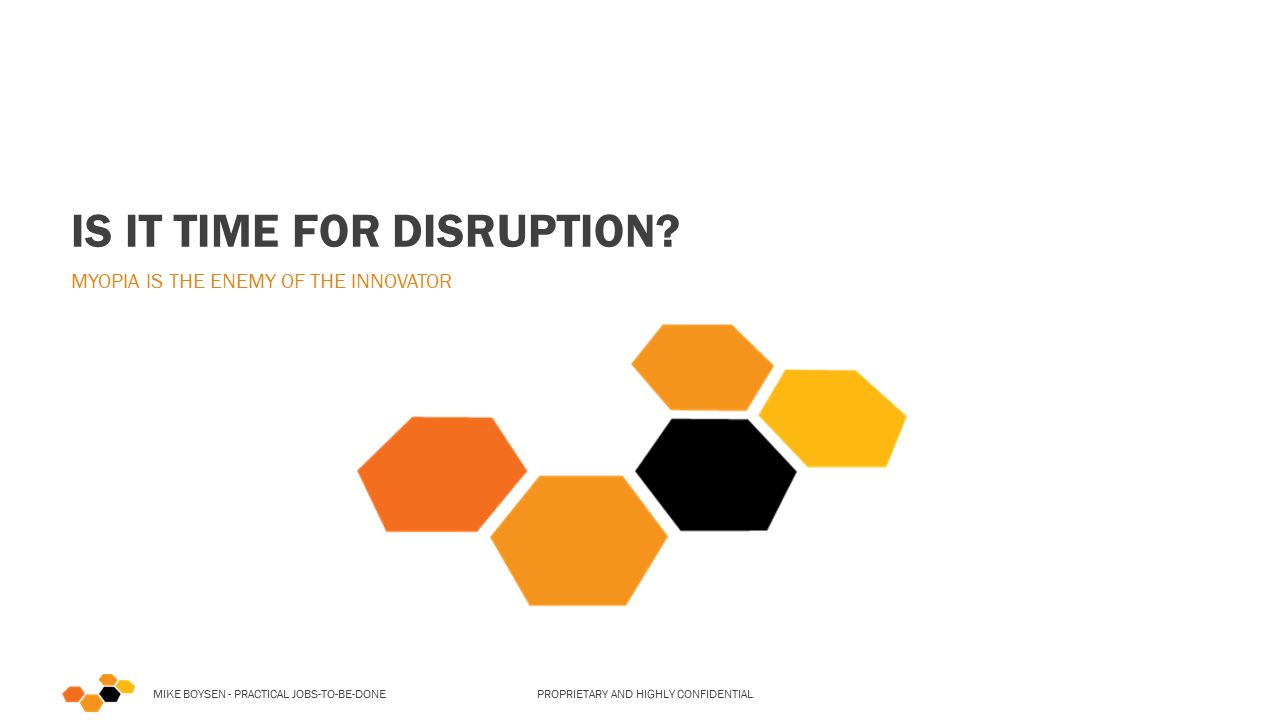


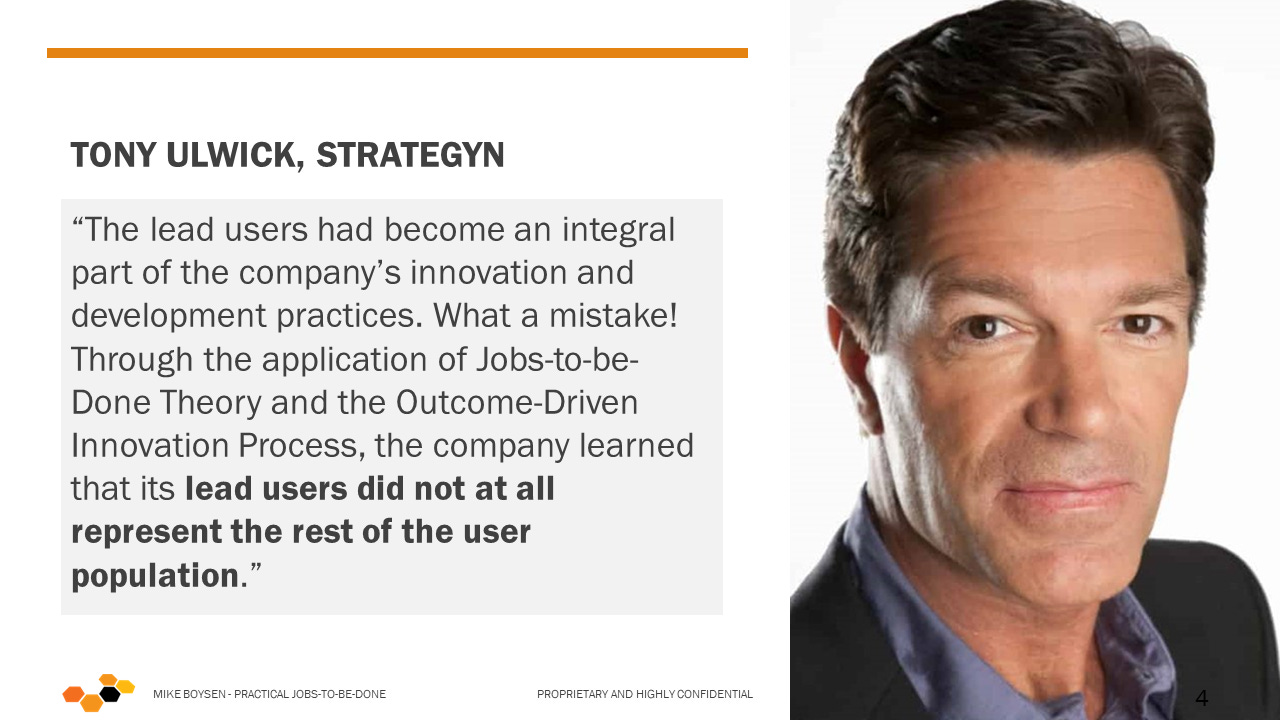







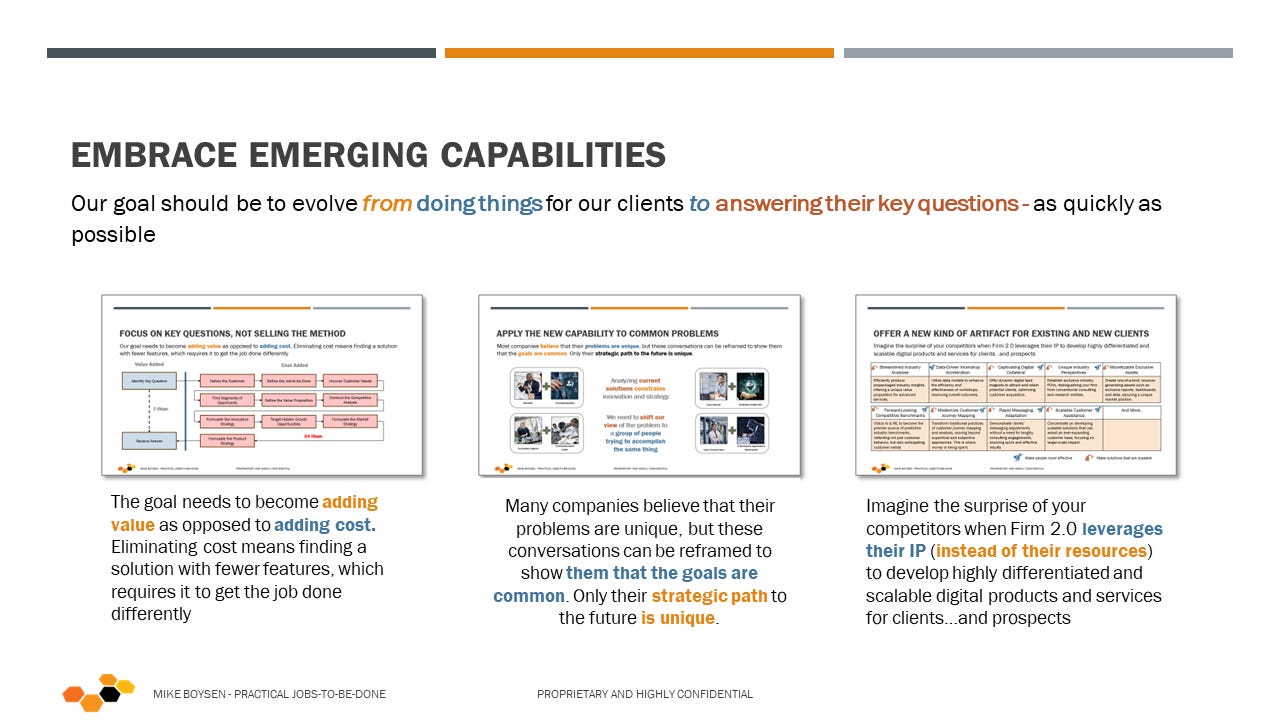



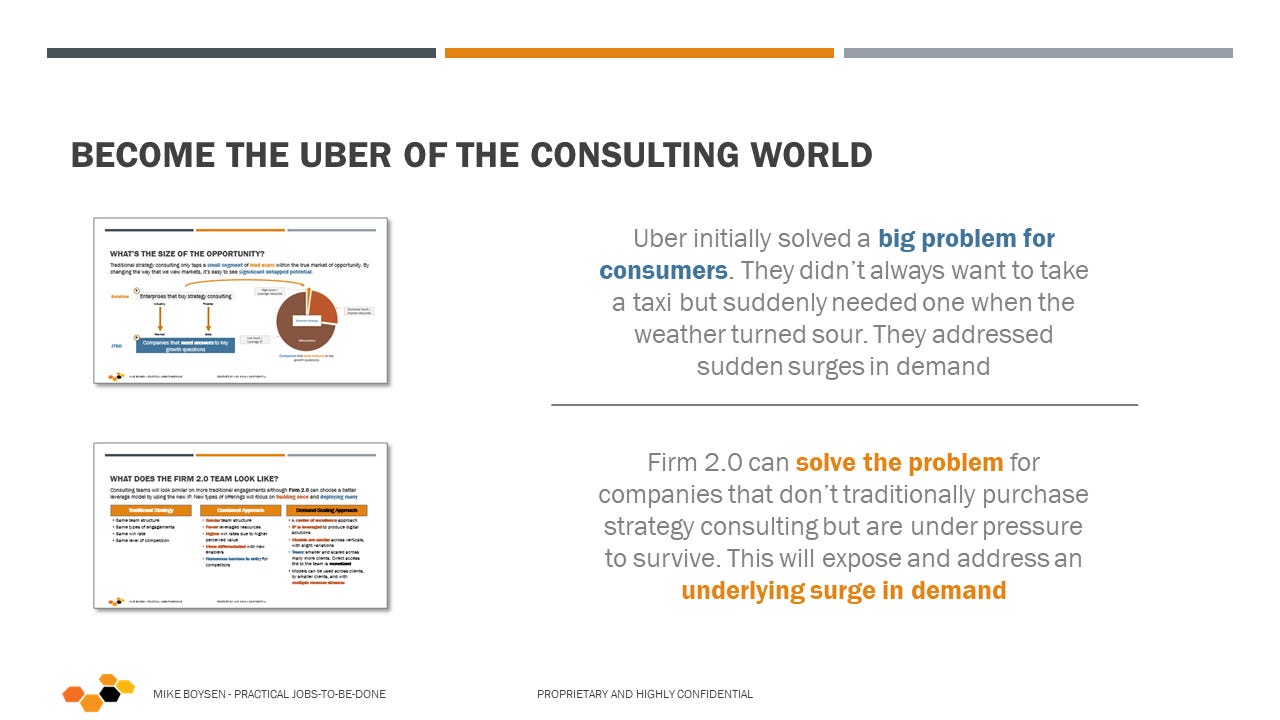
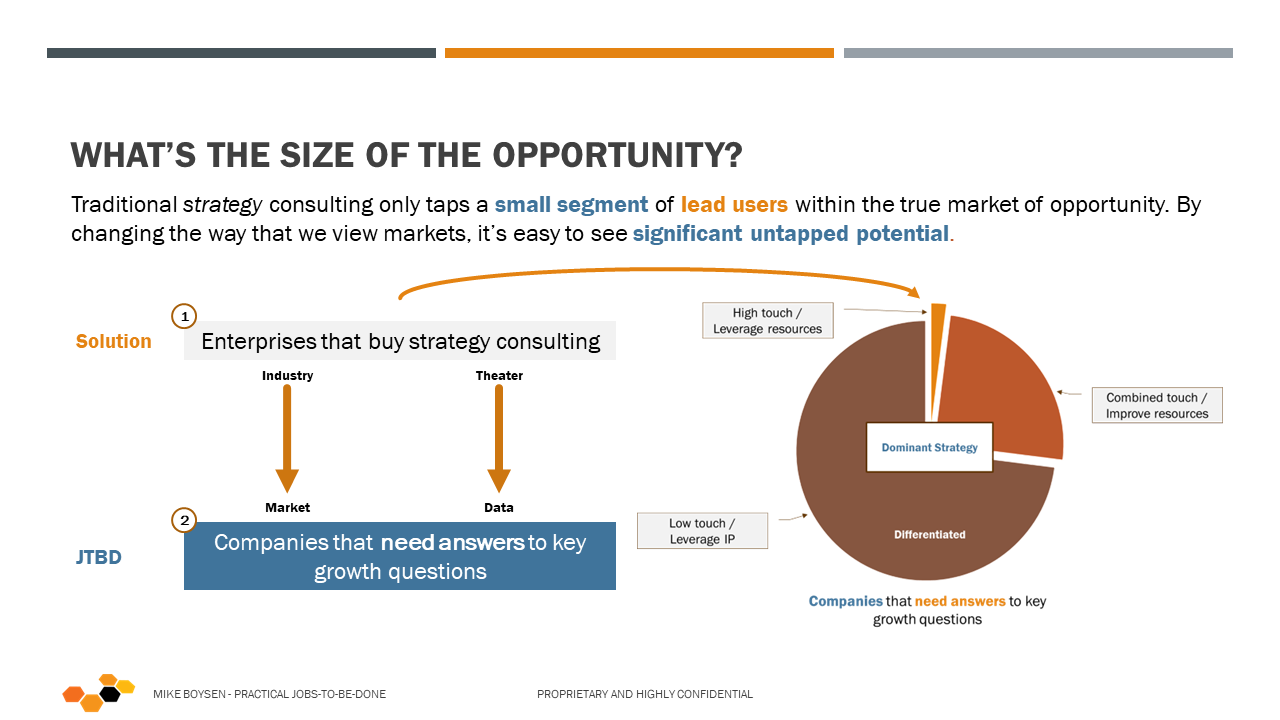


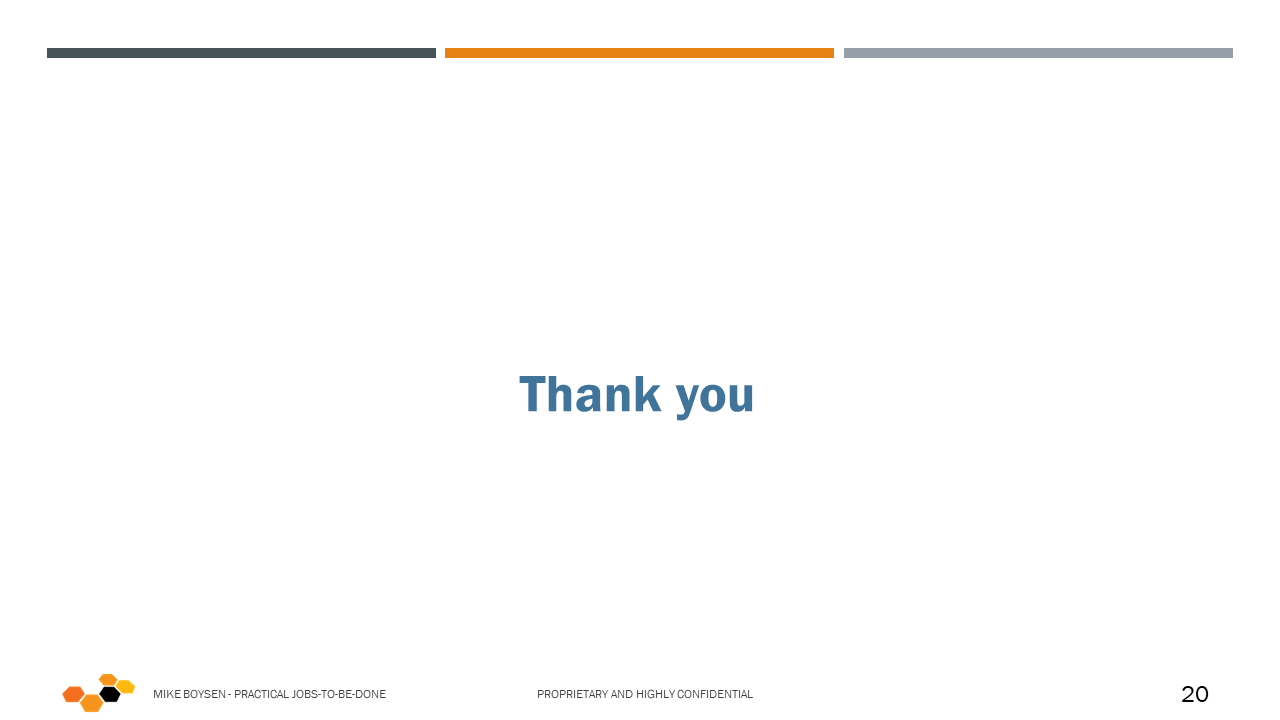












Share this post